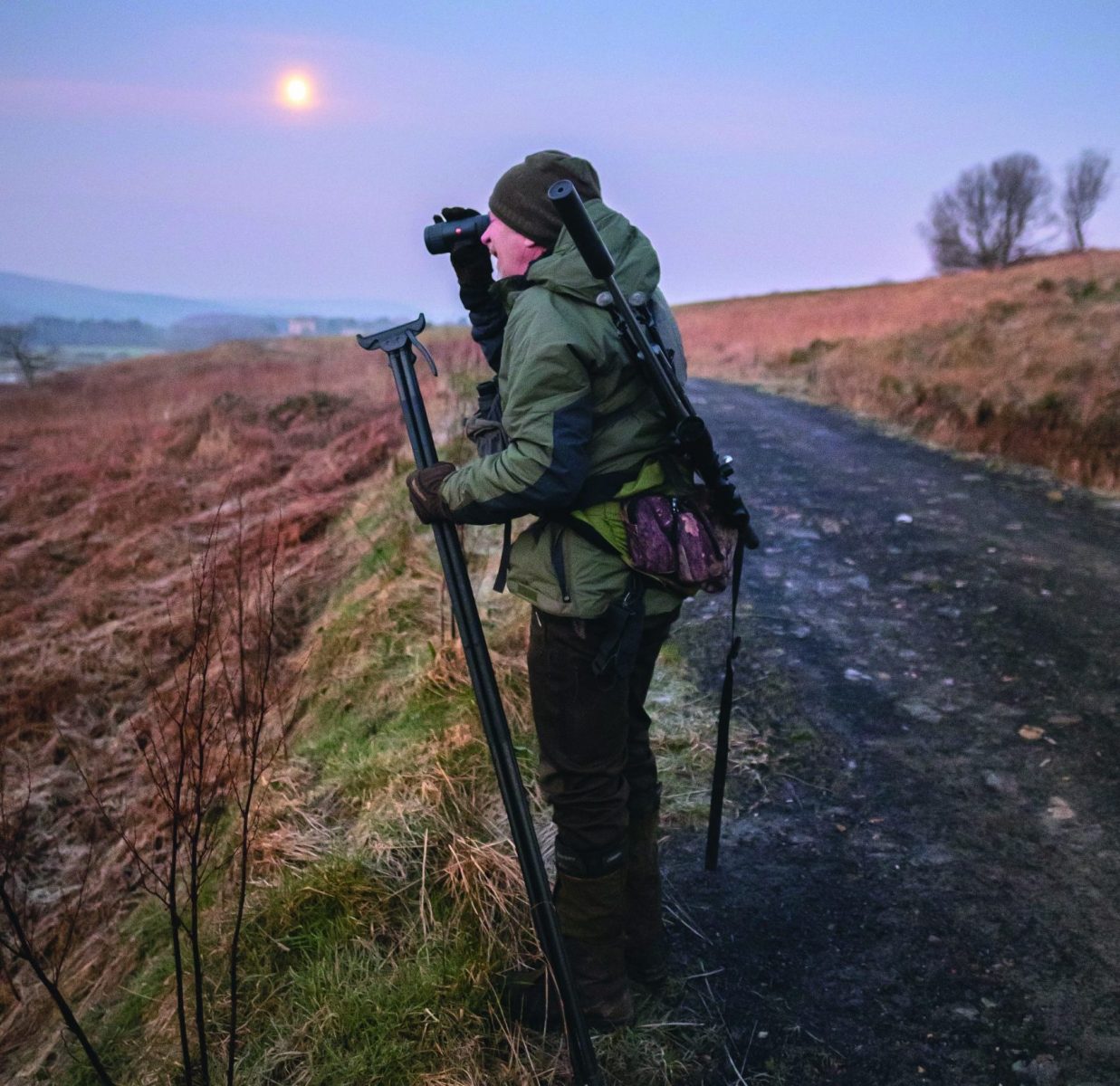The joys of solo stalking
While heading out with a deer guide or gillie is always money well spent, going it alone allows you to take a share of both the work and the glory, says Alasdair Mitchell

Chris searches for the shot roebuck before sending Zosia out to locate it
Some years ago, my wife was so busy at work that she proposed to hire somebody to exercise her horse. I remarked that this was like me paying somebody to go to the pub for me. Why not simply get rid of the horse? I was informed that my opinion was neither required nor helpful. We now have two horses, with more threatened almost daily.
When it comes to fieldsports, do you ever wonder about where to draw the line between using paid-for assistance and relying on your own skill and sweat? Almost all novice deerstalkers seek out a professional to help put them on the right track, so to speak. They learn from the stalker about the ways of deer and the craft of stalking. It’s money well spent. And in any case, many landowners insist that all stalking guests, of whatever experience, are accompanied. But as they get more proficient, many amateur stalkers begin to hanker for the opportunity to go it alone, to some extent. They want to be the main author of their triumph or otherwise. In one sense, their success rate might go down, but in another their satisfaction goes up.
Even on the open hill, where true solo stalking is often impractical, being told to “go on by yourself” for the final approach brings an enhanced glow of achievement. It also gives you a greater chance of getting to the firing point unseen. (What is essential kit for stalking?)
Independence
It’s not that you grow out of guided stalking altogether — just that having a degree of independence adds a further dimension. A day on the hill with an experienced stalker is always a learning experience. They know the ground, the way the wind swirls and where the deer are likely to be under any given conditions. They have the muscle and the kit to extract a carcass and get it back to the deer larder. They add an element of safety on the big hills. And above all, they are good company. But going solo has its own rewards, whether it is stalking, goose shooting or fishing. It is no surprise that deer syndicate places are snapped up so rapidly.
The appeal of DIY stalking has been evident right down the ages. The Victorian era was the heyday of formal hill stalking. But even in those days, a few robust guests refused to limit themselves to simply being handed the rifle at the last moment and being told when to pull the trigger. Consider this extract from a book on Highland stalking by JH Corballis, published in 1891: “… there is no excuse whatever for the individual who goes about with a whole retinue of assistants, with hot water, air cushions, changes of shoes etc… if such men but once experienced the pleasure of self-stalking, they would willingly exchange half the heads ingloriously obtained for those which they had secured by their own prowess alone.”
Mr Corballis was unstinting in his praise for professional stalkers and gillies. He certainly didn’t intend to threaten their jobs. He simply wished to redefine the role of the sporting gentlemen of his day to ensure they took a full share of both the work and the glory.








